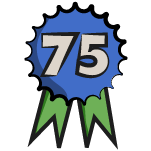Nest Boxes
Create safe and inviting homes for garden birds with our Nest Boxes collection. Featuring a variety of designs including hole-entrance boxes, open-front styles and colony options, each box helps provide nesting and roosting sites for different species. Whether you’re aiming to attract blue tits, robins, sparrows or other birds, the right box mounted correctly will make a big difference to your garden’s biodiversity and natural charm.
Sorry, there are no products in this collection
Return homeNest Boxes
Providing nest boxes is one of the simplest but most impactful ways to support garden birdlife. As natural nesting sites decline, offering quality boxes helps birds find safe places to raise their young or roost during poorer weather. The collection here offers a range of styles to suit different species and settings.
Why Nest Boxes Matter
According to conservation advice, many garden birds struggle to find natural cavities or suitable nesting spots in modern landscapes. A well-designed nest box provides shelter, security and a reliable site where birds can breed successfully. RSPB+1
Choosing the Right Style
Different birds prefer different types of nest box. Hole-entrance boxes (with round holes) are ideal for cavity nesters like tits and sparrows. Open-front boxes suit species such as robins or chat-type birds that like more visibility. Consider box size, entrance hole diameter, front design and materials when selecting. Peckish UK+1
Proper Siting and Installation
Where you position the nest box is crucial to its success. Advice suggests facing the box north to north-east to avoid midday sun and prevailing westerly winds. Height can vary: small hole-boxes are often sited 2-4 m up; open-front boxes may be lower. Ensure a clear flight path and nearby perches or vegetation for safety. Ark Wildlife+1
Maintenance and Hygiene
Regular cleaning of nest boxes prevents build-up of parasites and disease. Experts recommend cleaning after the nesting season (e.g., autumn) when boxes are no longer in use. Use boiling water, avoid insecticides and ensure the box is fully dry before reuse. RSPB
Encouraging Birds to Use the Box
To increase occupancy: provide feeders and fresh water nearby to draw birds into the area; install multiple boxes to give options; avoid placing feeders too close to nest boxes to reduce disturbance; choose designs suited to target species. The Bird House
Frequently Asked Questions
How high should a nest box be placed?
Height depends on bird species. A general guideline is about 2–4 m for small hole-entrance boxes, and around 1–2 m for open-front boxes for species like robins.
What direction should the nest box face?
Ideally face the entrance between north and north-east. This helps avoid strong sun and prevailing rain or wind from the west.
How often should I clean my nest box?
Clean it once a year after the breeding season, removing old nests, rinsing with boiling water and letting it dry thoroughly.
Which box should I use for robins?
Robins prefer open-front boxes positioned low (around 1 – 1.5 m) with some cover nearby rather than hole-entrance boxes that suit cavity nesters.





